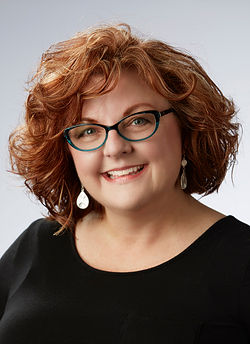Innovation in Education
Sustaining a culture of innovation at your school or district involves more than just coming up with new ideas.

Innovation is getting a lot of buzz in education today. The Innovator’s Mindset launched an introspective movement on innovation in education, and the momentum continues. However, innovation isn’t innovative.
The word comes from the Greek word innovationem, which was introduced in the 16th century as a noun of action, meaning “a new idea, device, or method.” The 17th century wasn’t kind to innovators, they often got their ears cut off, or worse, after presenting an idea that was out of the ordinary.
Benoit Godin has extensively researched the history of innovation and notes that the 19th century associated innovation with science and industry. Economist Tyler Cowan, another enthusiast of innovation, suggests that our most innovative time in history spans from 1870 to 1940. Think about how unbelievably creative and powerful that period was for the U.S. economy. If we look at 1870 to 1940 in education, the innovation included:
- Establishing the U.S. Department of Education.
- Passing the 14th Amendment (which is significant in Brown v Board of Education).
- Establishment of higher education institutions: Meharry, Tuskegee, Morris-Brown, and Stanford.
- Establishment of the National Education Association.
- Establishment of National PTA.
- First Montessori School in the U.S. opened in New York state.
- American Federation of Teachers is established.
- American Education Research Association is established.
- Passing the Smith-Hughes Act (funded agricultural programs and vocational education and was repealed in 1997).
- Progressive Education Association was established and focused on reforming education.
- Introduction of the fountain pen.
- Classical Conditioning study by John Watson.
- Gestalt Theory was introduced.
- The longest educational study known to last (75 years) began at Stanford University. Louis Terman studied the concept of "intellectually superior" children. Now known as gifted.
- Reorganization of Secondary Education.
- John Dewey published Democracy and Education. An Introduction to the Philosophy of Education.
- Nursery schools are established in Maine and New York (today known as Bank Street College of Education).
- Piaget published The Child’s Conception of the World.
- Wechsler Adult Intelligence Scale was developed and introduced as the first intelligence test.
It is important to note that much of this innovation continues to influence how we operate in the field of education today. We lean on these works to conduct schools, research, establish policy, and design learning. So it begs the question, what are we doing today that our future generations of educators will be able to lean on? We spend a lot of time talking about the mindset of innovation, but what has the outcome of that mindset been for our students?
Our students deserve the very best we have to offer them, including imagining a school system or a learning environment that meets their needs while stimulating their abilities. Does their schooling experience look much different than it did in the late 18th century, other than changing out some of the technologies in use? Embracing a mindset that is forward-thinking, creative and open to testing new ideas, willing to make mistakes, and trying again, and being collaborative and future-focused, is certainly beneficial but how does it truly bring about innovation in a school?
An innovative culture may bring new ideas to a school, but something has to enable or enact those ideas. School boards, governments and other political forces are pushing back on innovation under the guise of trying to improve outcomes. In fact, the Washington Post declares, “Political battles are now a central feature of education.”
As we start the school year in 2022, we need to orient our faculties to think differently and take unconventional approaches while considering the student’s perspectives. We must inform all of our stakeholders of the research that supports our decisions as well as outline how outcomes will be measured.
Tech & Learning Newsletter
Tools and ideas to transform education. Sign up below.
This is the dawn of our innovative age in education. Groom the innovative mindset in your building or district and make that mindset actionable to show your community just how innovative you can be for 2023. Now is the time to offer future generations some wonderful work to lean on!
Dr. Ray's career includes designing technology within the Frist Center for the Visual Arts and directing technology research through Vanderbilt University School of Medicine Science Outreach programs. As a district administrator for Metropolitan Nashville Public Schools, she led the award-winning design, implementation, and evaluation of instructional technology programs, including instructional design for online and blended learning environments, redesigning physical learning environments, redefining school libraries, and establishing the first virtual high school to award the diploma. She leads K20Connect and other passion projects supporting K20 education around the world.

